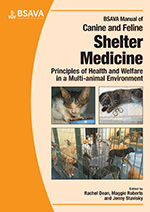
Full text loading...

Trap-neuter-return (TNR) is the name given to the capture, neutering and returning to home of groups of feral and free-roaming cats and dogs. This chapter describes a set of procedures and practices that are common to control of free-roaming dog and cat populations worldwide. Quick reference guides: Trap/catch, neuter, release (TNR/CNR) checklist; Euthanasia.
Practical management of free-roaming populations, Page 1 of 1
< Previous page | Next page > /docserver/preview/fulltext/10.22233/9781910443330/9781910443330.5-1.gif

Full text loading...





















